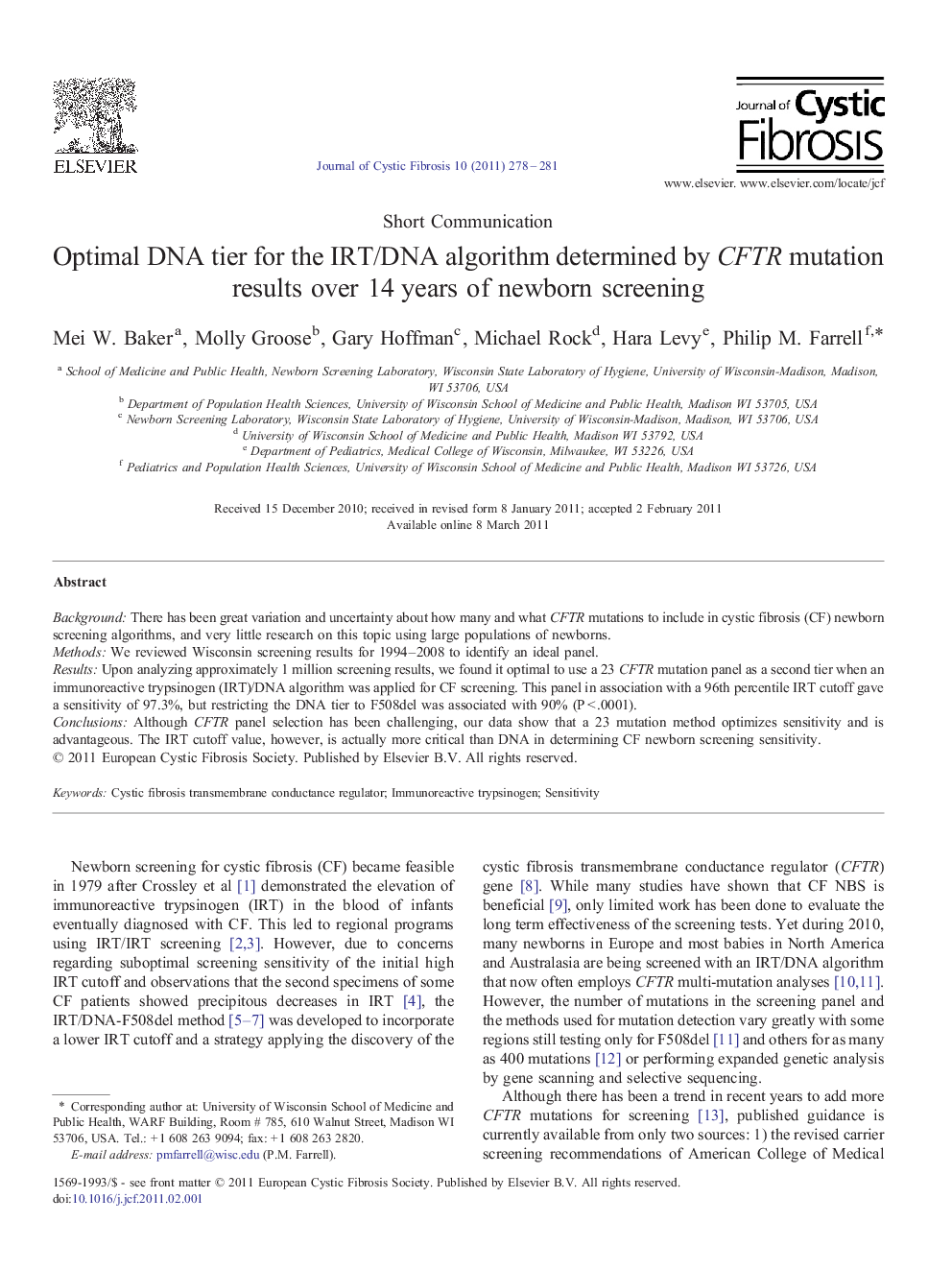| Article ID | Journal | Published Year | Pages | File Type |
|---|---|---|---|---|
| 4208809 | Journal of Cystic Fibrosis | 2011 | 4 Pages |
BackgroundThere has been great variation and uncertainty about how many and what CFTR mutations to include in cystic fibrosis (CF) newborn screening algorithms, and very little research on this topic using large populations of newborns.MethodsWe reviewed Wisconsin screening results for 1994–2008 to identify an ideal panel.ResultsUpon analyzing approximately 1 million screening results, we found it optimal to use a 23 CFTR mutation panel as a second tier when an immunoreactive trypsinogen (IRT)/DNA algorithm was applied for CF screening. This panel in association with a 96th percentile IRT cutoff gave a sensitivity of 97.3%, but restricting the DNA tier to F508del was associated with 90% (P < .0001).ConclusionsAlthough CFTR panel selection has been challenging, our data show that a 23 mutation method optimizes sensitivity and is advantageous. The IRT cutoff value, however, is actually more critical than DNA in determining CF newborn screening sensitivity.
